More than 70 years after India declared the Asiatic cheetah domestically extinct, their African cousins have been introduced in an ambitious project to have the world's fastest land animal roam again in India.
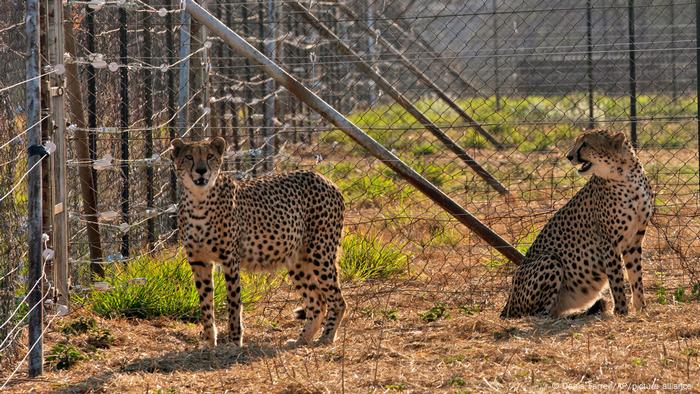
Cheetahs were once widespread in India but became extinct in 1952 from hunting and loss of habitat
Eight wild cheetahs — three males and five females flown from Namibia — were set free from their transport cages inside a holding area at India's Kuno National Park last week.
It is the first step in an ambitious attempt to reintroduce the feline species to the South Asian country, seven decades after they died out there.
The cheetahs will quarantine for a month before being released into a larger enclosure inside the sprawling park in the state of Madhya Pradesh in central India.
Indian Prime Minister Narendra Modi — who was celebrating his 72nd birthday — was there to welcome the cheetahs to their new home.
"A long wait is over," Modi wrote on Twitter together with pictures of the cheetahs in their new environment.
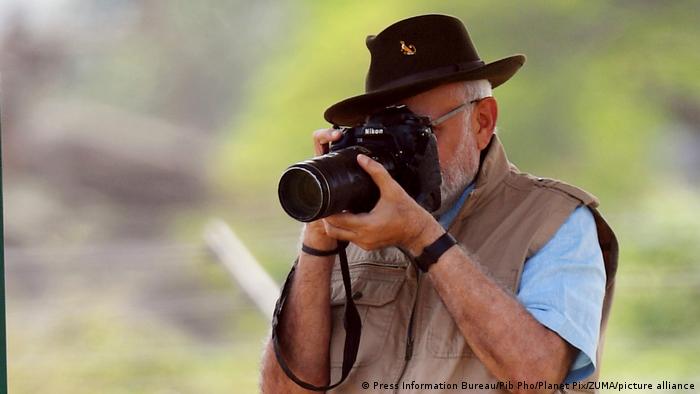
Indian PM Narendra Modi, pictured, says that reintroducing the cheetah to India will increase biodiversity and boost eco-tourism
For now, the cats will be kept in a specially built compound where they will be monitored for disease and adaptation before being released into the bigger enclosure.
The Asian cheetahs were native to India before they were declared extinct in 1952 — largely due to habitat loss and hunting for their distinct spotted pelts.
Will the cheetahs survive?
It's the first attempt to relocated cheetah's from Africa to India and there were mixed reactions to the animals' move.
"As a conservationist, I am thrilled, and as Cheetah Conservation Fund's leader, I am exceptionally proud of the work of our reintroduction team," said Laurie Marker, the founder and executive director of the Namibian-based CCF, in a press release.
"Without research and dedication to cheetah conservation, this project could not take place."
Marker has been a advisor to the Indian government's Project Cheetah on behalf of the Namibian government.
As the international media spotlight shines on Kuno National Park, other experts are taking a more cautious stance towards the program, which plans to release 50 cheetahs into various national parks over the next five years.
Some worry that the reintroduction plan is premature and question whether the cheetahs will survive.
A costly mistake?
Ravi Chellam, a wildlife biologist and conservation scientist, described the program to reintroduce cheetahs to India as a "vanity project" which was rushed through to meet some goals other than conservation.
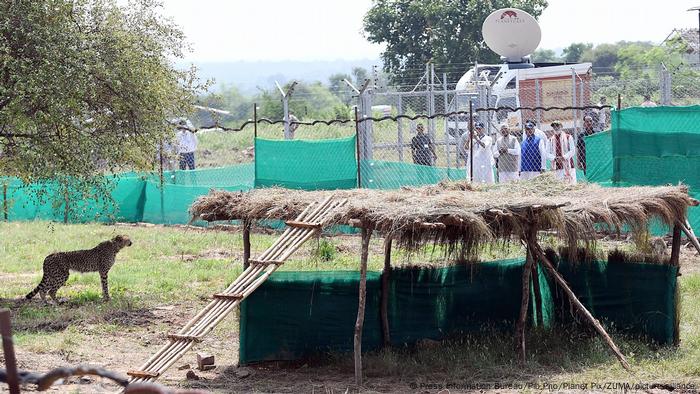
The cheetahs tentatively emerge from their cages — nervously scanning their new surroundings
"Facts should always speak louder than opinions. This is not even mentioned in India's National Wildlife Action Plan [2017-2031] and will divert attention from far more important and critical conservation issues such as the great Indian bustard, caracal and Asiatic lion," Chellam told DW.
"The conservation goals are unrealistic and unfeasible. Tragically, despite all the investment this will most likely be a very costly mistake," said Chellam, who also suggested it was a bid to stall the relocation of Asiatic lions.
The Kuno National Park was originally identified for the relocation of the Asiatic lions from Gujarat's Gir sanctuary, currently the only home of the Asiatic lions in India. But despite work from 2006, the plans have remained on the back burner.
Boon or bane?
Naturalist and conservationist Valmik Thapar is even more critical of the cheetah relocation program. He believes the experiment is flawed and the cheetahs shouldn't go through what he calls a "traumatic experience."
"We do not have the habitat or prey species for wild, free-roaming cheetahs," Thapar told DW. "Captive cheetahs survive with difficulty and they are being introduced into tiger habitat that has more forest than open grassland."
"They prey on mostly on smaller antelope like springbok, steenbok and Thomson's gazelle," he added, animals that aren't found in India.
He is also worried the cheetahs will fall prey to other predators.
"This area is full of hyenas and leopards, who are key enemies of the cheetah. If you see in Africa, hyenas chase and even kill cheetahs. Some of the villages around the park also have wild dogs," he said.
However, wildlife officials maintained that such concerns are baseless because cheetahs are highly adaptable animals and the Kuno National Park has been fully examined for habitat, prey and the potential for man-animal conflict.
Thapar pointed to Tanzania's Serengeti Park, which had just over 300 cheetahs for more than a million prey. But their population declined, he said, because the cats lacked genetic diversity and were susceptible to disease.
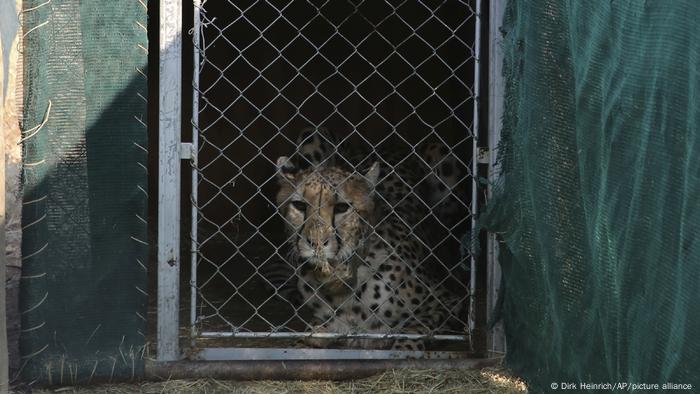
Compared to other big cats, cheetahs are smaller in size
'Huge challenge' to saving the cheetah
Despite the skepticism, the project's supporters say the cheetahs' existence will reinforce both conservation efforts and the local economy.
"The project will be sustainable if the action plan is followed to establish three to five populations in India, not just Kuno," Yadvendradev Jhala, the dean of the Wildlife Institute of India, told DW. "These then need to be managed as a metapopulation by moving cheetahs between populations and southern Africa."
Jhala said he believes the long-term impact would be to rewild systems and this is a global effort to undo the wrong people have done and to restore ecosystem elements that have been removed.
"The project also contributes to the global effort to save the cheetahs by allowing them to expand into their historic range," added Jhala, who also serves as the principal scientist for India's Project Cheetah.
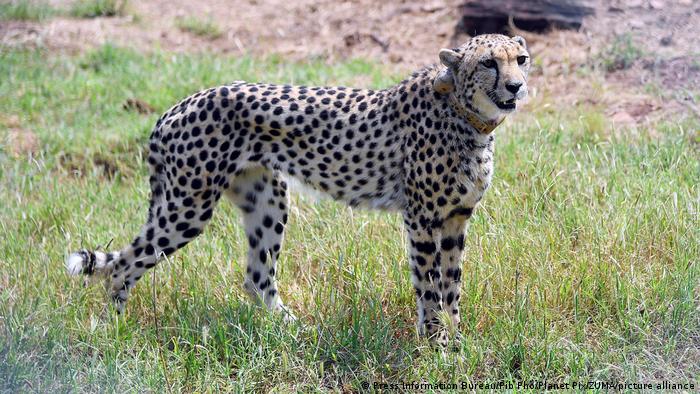
Experts hope that Indian forests could offer these cats space to thrive
System for success
Pradnya Giradkar, India's first cheetah conservation specialist, said the process of bringing a species back that has become extinct locally was a huge challenge.
"The cheetah needs massive amounts of support to survive, and it is my hope that we, as conservationists, can provide what the species requires for success," Giradkar told DW. "Success is generally based on reproductive output and important characteristics of the release site include habitat and prey availability."
Compared to other big cats, cheetahs are smaller in size. The cat is best known for being the fastest land animal, with the ability to sprint at high speeds of up to 120 kilometres an hour (75 miles an hour).
Today, cheetahs are found in the wild in several locations in Africa, and a tiny population of another subspecies, the Asiatic cheetah, is found in Iran.
Scientists estimate that fewer than 8,000 African cheetahs are living in the wild and that there may be fewer than 50 Asian cheetahs left in the world. The African cats are visually identical to their Asian cousins but have minor genetic differences.
A dozen more cheetahs are currently quarantining in South Africa and are due to arrive at Kuno National Park in October.
Edited by: Keith Walker
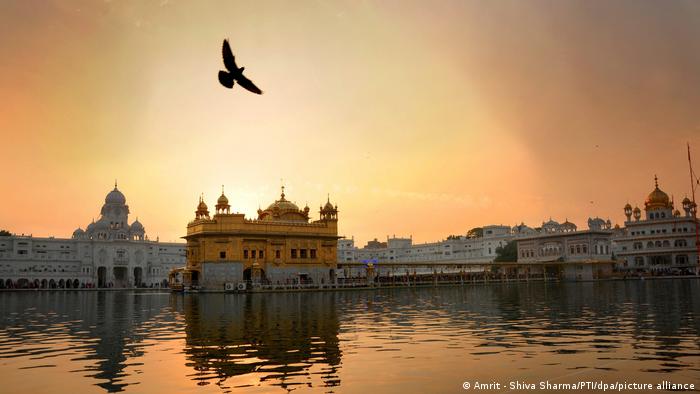
75 YEARS OF INDEPENDENCE: 10 REASONS FOR INDIA
Magnificent architecture
India's most-famous landmark is a worldwide icon: the Taj Mahal tomb mosque in Agra. But there are many other imposing buildings, such as the Golden Temple of Amritsar (pictured), located in Punjab, which is the most spiritually significant sanctuary of the Sikh religion. A visit in the evening is especially beautiful, when the gilded temple walls are bathed by the gentle light.
12345678910
Date 20.09.2022
SEE
No comments:
Post a Comment